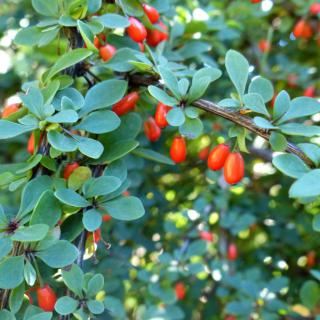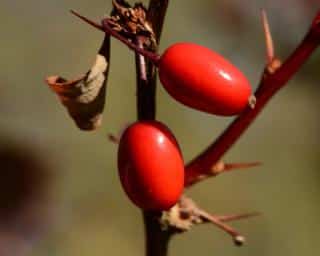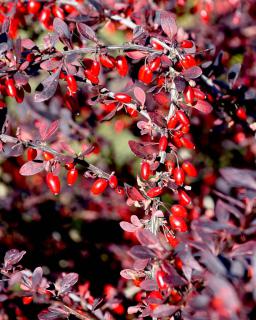

Barberry is a shrub much appreciated for its foliage, defensive spikes, and flowers.
Basic Barberry facts
Name – Berberis
Family – Berberidaceae
Type – shrub
Height – 3 to 10 feet (1 to 3 m)
Exposure – full sun, part sun
Soil: ordinary – Foliage: deciduous/evergreen – Flowering: spring/summer
There are several different barberry species, some of which are deciduous, others evergreen, but they’re all planted in the same manner.
 It is best to plant barberry in fall to speed root development up.
It is best to plant barberry in fall to speed root development up.
Planting is possible in spring, taking great care to water regularly in the following summer.
Barberry is propagated through cuttings at the end of summer.
This shrub’s hardiness inspires awe, and you won’t need to add fertilizer or other amendments in normal settings.
 Before diving into your barberry bush to prune it, wear your best and thickest gloves, because all those thorns are out to get you!
Before diving into your barberry bush to prune it, wear your best and thickest gloves, because all those thorns are out to get you!
For hedges, go for one pruning each in fall and spring to shape it into the silhouette you desire.
As a standalone, it can be pruned back in fall more or less by ¼ its height in order to boost blooming in spring.
It is preferable to use gloves so that you don’t get hurt.
Barberry needs water over the 1st year after planting to take root well, especially if it was planted in spring.
Mulch on the ground helps retain moisture and will hinder weed growth. Don’t neglect this because weeding under all those thorns is not a pleasure!
If you feel that your barberry isn’t growing very fast (extremely poor soil), provide it with fertilizer in spring. Make your fertilizer from weeds!
For evergreen leafage and an early yellow bloom, you can use Berberis darwinii. Take note that it doesn’t resist freezing very well.
If you’re looking for a dwarf barberry variety to set atop a mound, a low hedge or along edges, try out Berberis thunbergii which stays evergreen in winter.
For a 6 ½ foot (2 meters) hedge, plant the Berberis umbellata which is an excellent opaque hedge.
Lastly, if you’re attracted to ornamental foliage, bring home the Berberis ottawensis ‘Golden Ring’ and its purple leaves gilded with yellow, or the Berberis vulgaris, still also purple but very dark.
Barberry has been know to be contaminated by Septoria leaf spot fungus. It’s one of the plants that Septoria infects.
If you’re growing barberry indoors, in a container, it will certainly encounter the usual household pests:
 Barberry is a shrub that comes both in deciduous or evergreen varieties, but all these variations come with long protruding thorns.
Barberry is a shrub that comes both in deciduous or evergreen varieties, but all these variations come with long protruding thorns.
Native to Japan, this thorn bush encompasses several hundred species and this provides for a variety of shapes and colors.
The most common variety is the Thunberg barberry, or Berberis thunbergii, frequently used to set up hedges.
It can be found with either green or purple leafage and the blooming ranges from pink to white through yellow and orange.
Most of the barberry species can be grown as bonsai plants.
Good to know: the barberry fruits are edible! These berries can be eaten cooked or raw, and they’re full of nutrients. Note: there are small precautions to take first.
Can I purchase Berberis thunbergii online
Hi, sure you can. Depending on the online store, they’ll either be half-foot saplings or yard-high shrubs already. Season is important though, it’s best to buy these in fall (or have them delivered in fall) so that they can sprout roots during winter. Nature & Garden doesn’t sell plants.
Hi, can this plant live in a pot indoors? Thanks!
Hello Marta! While not very common, yes it is possible for barberry to grow indoors. This is more often the case as a barberry bonsai, however!